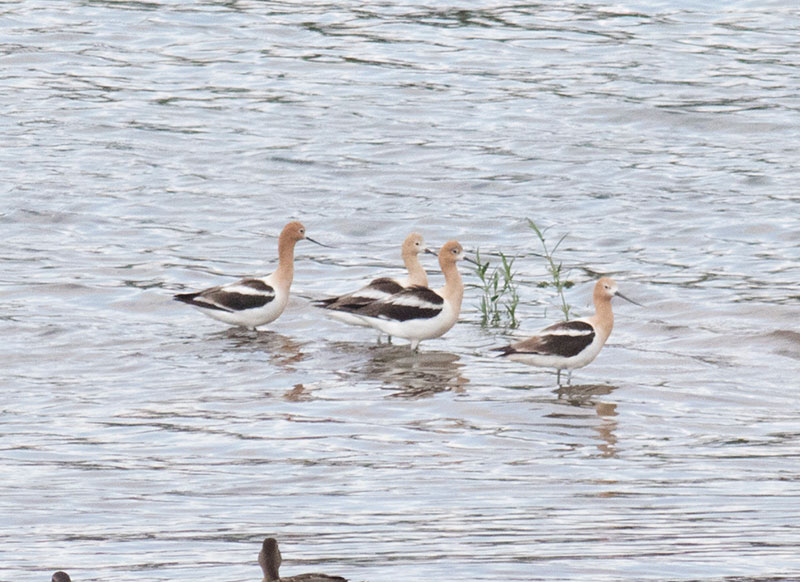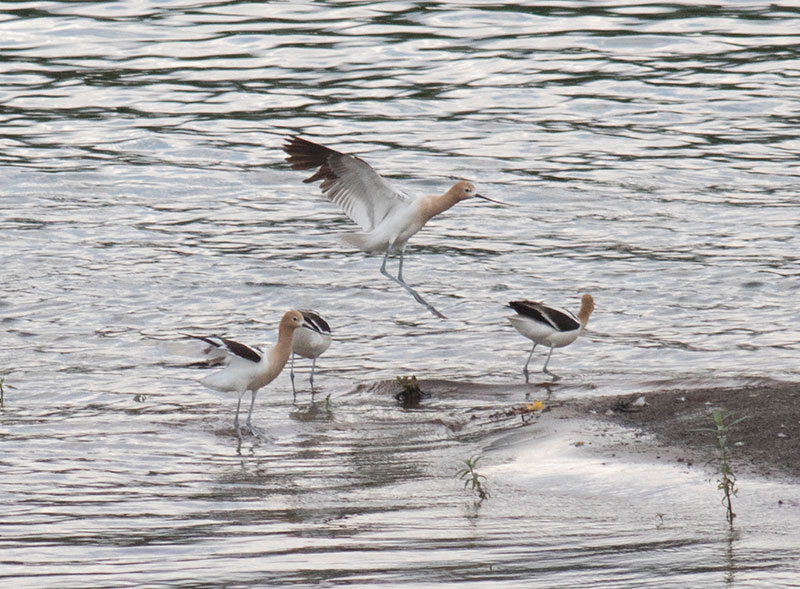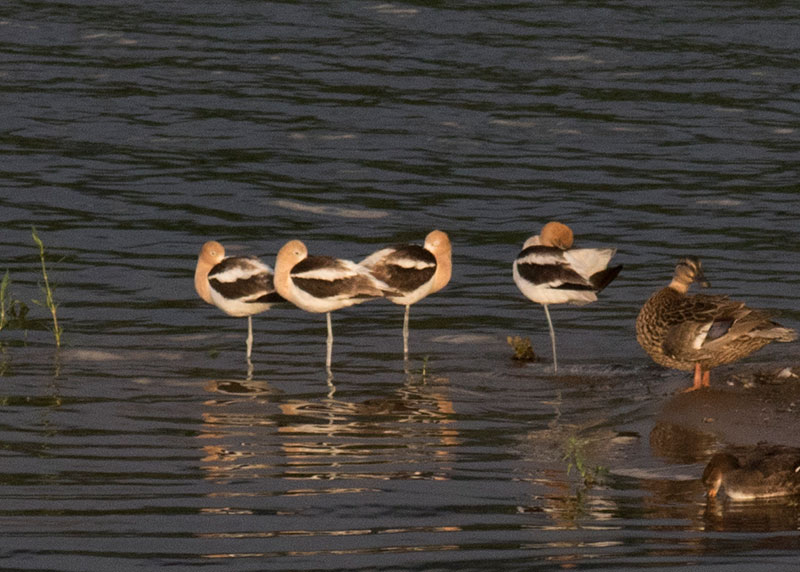American Avocets in Williamsport
7/23/17
By David Brown

American Avocets
On the evening of July 14th a friend and I spotted four American avocets on an island near the Williamsport dam. This is believed to be the first Lycoming County record of this species.
American avocets are large shorebirds with a 31-inch wingspan, long legs, and a thin upturned bill. These avocets were in breeding plumage with black and white wings and an orange head and neck. In the winter, avocets are completely black and white. Males and females have identical plumage but different bill shapes. The bill of females is more upturned whereas the bill of males is straighter on average.

American Avocets
American avocets nest at inland lakes and wetlands in the western United States and small portion of Canada. They do not nest in the eastern United States. The birds we saw were likely migrating from their western breeding grounds to their wintering grounds along the Atlantic coast. They were probably forced to land by a rain storm that went through earlier in the day. They were still there at dusk when we left, but were gone the next morning.
It is common for many shorebird species to begin migrating through Pennsylvania in July. However they can be difficult to find. In good weather most flocks migrate over without landing. This group was spotted because they landed at a common birding location. If they had landed elsewhere along the river they would have gone undetected.

American Avocets (with a Mallard)
The main diet of avocets is aquatic invertebrates which they catch by probing mud and sand with their long bills, often with a side to side motion. Avocets have toe webbing that allows them to swim when the water is too deep to stand. We also observed all four avocets standing on one leg while resting with their heads turned around and tucked into their backs.
A flock of about fifty ring-billed gulls flew in and many landed near the avocets. This was another sign of early fall migration. Some of the gulls were juveniles meaning they were born this summer. A few minutes later a peregrine falcon flew by and many of the gulls took flight. At one point two of the avocets took off but only flew for a minute before circling back and landing with the others.
About a dozen local birders came out to see the avocets. It was a new county bird for everyone and a life bird for many. Avocets were also seen at least one other spot in the state the same day. This prompted a birder to go out looking for avocets the next morning and he ended up finding a roseate spoonbill in Lancaster County, the first in Pennsylvania since 1968. Another was photographed near Camp Hill later in the day. Roseate spoonbills are unmistakeable large pink birds that are normally found in Florida. More of this extremely rare species may be in the state so keep an eye out along rivers and creeks and report any sightings.